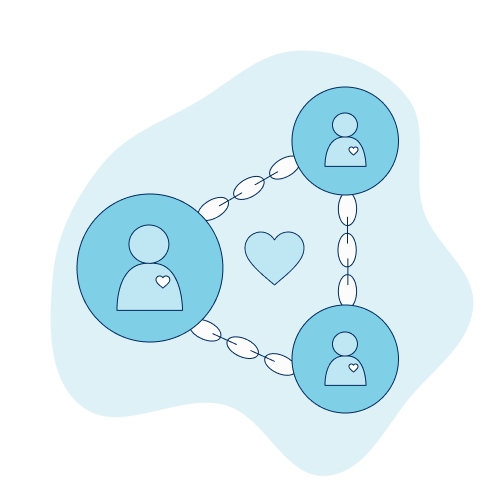
Katrina, a former A&S UTQAP design researcher, reflects on her experience conducting human-centered interviews. She discusses the importance of balancing empathy in qualitative research from a personal and professional standpoint.
Written by Katrina Sze Ching Soong, Qualitative Data Archivist Team Lead, Honours Bachelor of Arts, English and Philosophy Double Major, History Minor
Empathy plays a huge part in our work to center student voices. As a former design researcher part of the Arts and Science UTQAP (University of Toronto Quality Assurance) Process, I often had to interview other students to collect their feedback. I often thought about the role of empathy in creating a safe environment for an interview, as empathy was central to building rapport with the participant and ensuring that the participant feels comfortable enough to share. But working in a role with empathy at the forefront can be challenging, because it can be easy to blur the lines between a professional, research-based conversation with a more friendly conversation. My experience interviewing people has lead me to reflect on the role of empathy both in my personal and professional life, and how I go about assessing qualitative research at the Innovation Hub.
Moments of Empathy in Research

Empathy is integral to the interviewing process in qualitative research. I experienced this first-hand when I was a Design Researcher at the Innovation Hub. One of the most memorable moments that comes to mind was when one of the participants thanked me at the end of the feedback session for providing them with a safe space to share their story. Not only that, but they were even able to connect with another participant during the interview session.
There are so many ways to foster moments of empathy in research. Sometimes, it is about the little things you do. I recall participants thanking me for pronouncing their name correctly. I remember vividly that they mentioned that sometimes people don’t even bother asking how to pronounce their name or make sure that they are pronouncing it correctly. So, I found that building in empathetic gestures – no matter how small – into the interview process can create an environment of safety while also allowing participants to share their thoughts openly.
Empathy in My Everyday Life

Work is not the only place where empathy plays an important role in my life. Empathy is also something I regularly practice in my everyday life.
As an English major, I have had many opportunities to read stories from many different time periods and characters. Reading these texts, especially those that give me insight into the thought processes of different characters, helps me to be more understanding and empathetic to people who are different from myself since I can understand where they might be coming from. Because a lot of the books I read are very old English texts, it is a common practice among my professors to flag content warnings during the beginning of lectures or before we start reading the books. One of my professors even told us that if we ever feel uncomfortable with the content of the week, we can send him a message if we need to take a break and be absent. Knowing that I can step away when I need to made me feel really comfortable – and it’s something I try and replicate while doing interviews.
Empathy is also important to being a good friend and a good listener. This is especially the case when I am approached by my friends with their troubles. I always try to be present in our conversations by showing them that I’m actively listening, such as by nodding my head. These active listening skills have helped me to be a design researcher who is empathetic and attentive to participants.
Balancing Professionalism and Empathy

While it is important to be empathetic during the research process, I’ve realized empathy in research looks very different from being empathetic to a friend. Since interviews are about centering participant voices, it might feel out of place if I start replying to participants’ stories with my own opinions or experiences. Conducting qualitative research is about creating a space where people can earnestly share their perspectives, experiences and insights with you, rather than being able to bond and connect over shared experiences like I might with my friends.
Not only that, sharing my thoughts and opinions could even potentially make the interview space unsafe. I remember thinking that, since I am a U of T student, the experiences I will hear from other students will be rather similar to my own. I remember feeling surprised when, at moments, it was not. But if I voiced my surprise aloud, it might make participants feel self-conscious about their own experiences and feel that it is no longer a safe space to share their stories. This is why having empathetic and ethical research practices can make participants feel safe before, during, and after interview sessions.
A Balancing Act Creates Safety
In design research, it’s always important to balance both empathy and professionalism. I personally feel that it is by maintaining this balancing act that we can create a safe space for participants to share their stories. I encourage you all to think about the role empathy has played in your lives and how you can implement empathy-based research skills to center human voices.
0 comments on “Empathy in Qualitative Research: A Balancing Act ”